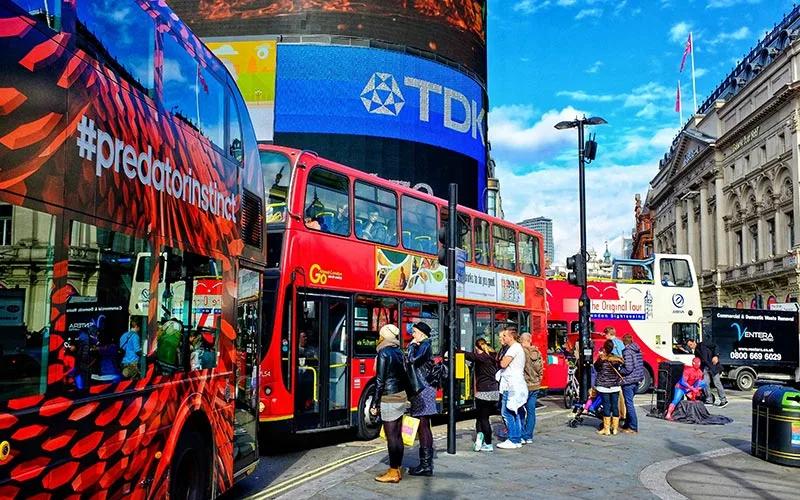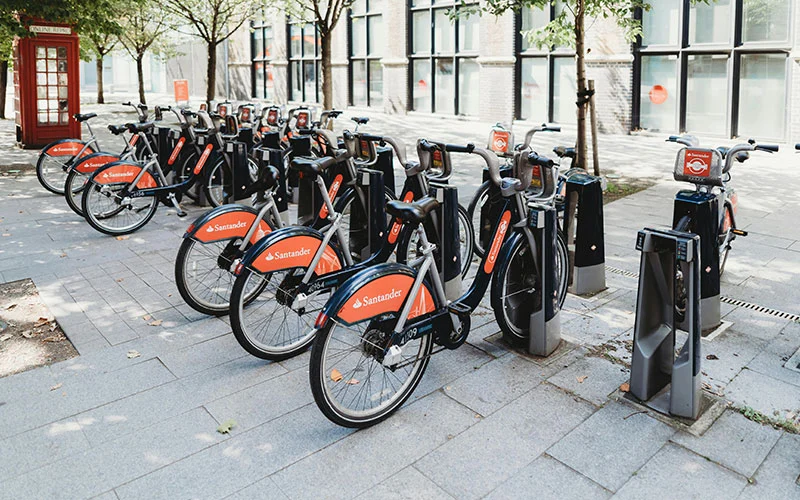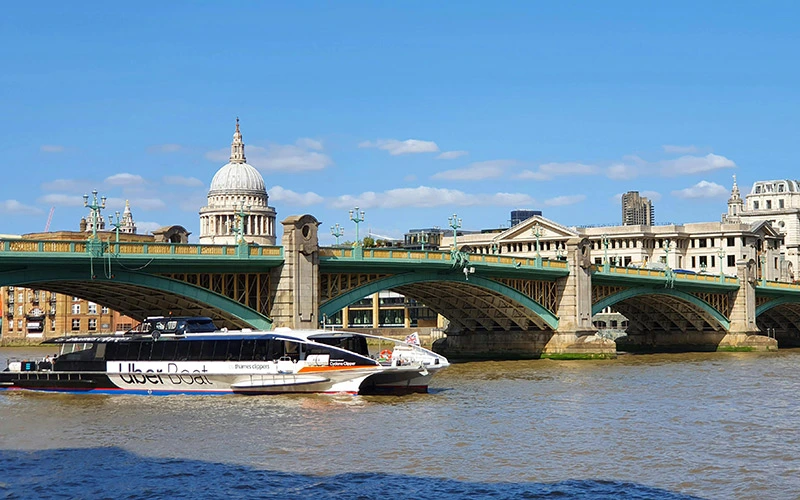London is a large city with more than nine million residents. You can find Roman walls, Victorian buildings, and post-World War II restoration work there. The London public transportation system is first-rate and offers tourists a wide range of options. You can take the train, the tube, and the roadway.
There are nine ticket zones in London, with zones 1 and 2 being in the city center and the number rising as you move farther out. For instance, Heathrow Airport is located in Zone 6. All zones will be covered by the London transportation alternatives listed below.
How to Pay for Public Transport?
You can pay for public transport in London in a variety of ways, such as by purchasing a travelcard, an Oyster card, a visiting Oyster Card, a contactless card, or an individual ticket. The best option is usually to use a contactless card that is accepted in the UK, followed by an Oyster card. The Oyster system also covers trains to Heathrow, such as the Elizabeth Line and Heathrow Express, and Gatwick, including the Gatwick Express.
1) London Red Buses

The red double-decker buses that are common in London allow you to see the best places to visit in London with ease. They offer fantastic city vistas, but because of traffic and the dozens of commuters getting on and off at each stop, things can move slowly. All you need to do to board a London public bus is touch your contactless or Oyster card on the large yellow card reader.
The typical hours for bus services are five in the morning to eleven thirty at night. There are LED screens at many Bus stops that show the arrival times of buses. Excellent bus maps that list all routes and destinations served from that specific area are available at each station. However, the best method to remember when your next bus is due is to download an app like Citymapper to your smartphone.
2) The London Underground
The quickest and most convenient way to get around London is via the London Underground. Only over 45 per cent of the London Underground network operates underground. It runs across 11 distinct color-coded lines. The Tube is the fastest and most convenient method to move around the city, even though ongoing engineering and improvement projects necessitate weekend closures and the power failure of escalators.
The Piccadilly Line makes stops at several important landmarks, including Knightsbridge, Covent Garden, Hyde Park Corner, and Piccadilly Circus. Also, it departs from the terminals at Heathrow. Trains depart every ten minutes. Several lines like the Central, Jubilee, Northern, Piccadilly, and Victoria lines operate all night on Friday and Saturday to transport partygoer’s home.
3) Santander Cycles

Riding a bicycle is a fantastic method for getting around the city. By creating new cycle superhighways for commuters and quietways, or backstreet bike lanes, for recreational cyclists, the city has made a concerted effort to enhance the cycling infrastructure. With bike-hire docks located all across the city, the public bike-hire program Santander Cycles is very helpful for tourists. They are also called Boris Bikes in honor of Boris Johnson. By renting a bicycle, you can visit the hidden gems in London. During 24 hours, you can rent these cycles for as many trips as you like, lasting up to 30 minutes. There are extra charges if your trip takes more than thirty minutes.
There are 1400 bikes, including 500 e-bikes, and 781 docking stations. Use your bank card to pay at any docking station or download the app, then follow the directions. Get the app to see which bikes are nearest to you and where you can drop off your bike close to your destination.
4) Docklands Light Railway
The Docklands Light Railway is a completely automated light rail network. It is run by TfL and opened in 1987. There are seven train lines and forty-five stations. No driver is present. Stations including Shadwell, Stratford, Bow, Heron Quays, Canning Town, and Canary Wharf provide easy access to the Tube network.
This London public transport system has connections to both London City Airport and the London Cable Car. It is open around the clock. The abbreviation DLR appears as a prominent blue banner inside a hollow green circle, but otherwise, the emblem is recognizable as being similar to the tube. On DLR, use your Oyster cards. Contactless cards are another option for payment.
5) IFS Cloud Cable Car
With views of the River Thames and the London Skyline, the IFS Cloud Cable Car is a well-liked tourist destination in London. It makes its way from the IFS Cloud Royal Docks to the IFS Cloud Greenwich Peninsula. You can board from the Royal Victoria or catch from North Greenwich. Every 30 seconds, a flight takes place. It takes about ten minutes. With a Visitor Oyster card, you can purchase cable car tickets at the terminals and get discounts. Packages range from sunset excursions to a champagne-filled flight.
The Emirates Air Line is another well-liked mode of transport in London. It is a cable car that connects North Greenwich, which is around 90 meters above the Thames, with the Royal Docks in East London. Although the trip is short and quite expensive, you can enjoy the stunning sights on this ride.
6) Uber Boats

The Uber Boats were launched in 1999. From all major London Piers, the Fast River Thames services depart every 20 minutes. This fleet of twenty fast boats operates from dawn till dusk every day of the week. It travels across three zones – the East Zone, which connects Canary Wharf to Woolwich. The Central Zone, which runs between Battersea Power Station and Canary Wharf. The West Zone, which runs from Putney.
Uber Boats along the Thames River is a famous public transport London, that provides commuter services. You are assured of a seat and a view, and they move quickly. Between the piers of Embankment, Waterloo, Blackfriars, Bankside, London Bridge, Tower Bridge, Canary Wharf, Greenwich, North Greenwich, and Woolwich.
7) Taxis
From the well-known red bus to the tube, London undoubtedly has some iconic forms of transportation. However, the black taxi is arguably the most well-known transport in London. The London Hackney Carriages, established in 1662, have been transporting people around the city for more than 350 years. To operate the vehicles, drivers must have detailed knowledge about the map of the city that allows them to move around it effectively without the use of maps or technology. In London, riding in a black taxi is undoubtedly an experience. To be picked up, you need to wave at one to signal the driver to stop.
Although black cabs are more costly than any of the other TfL-regulated modes of transportation, they are occasionally the most convenient way to go from one area of the city to another. If you are traveling with others, they can prove to be reasonably priced. Note that fares must be paid with cash or a credit card because taxis do not accept Oyster cards. The fare is determined by the distance and duration using the meter in the taxi. It is to be paid when the trip is finished.
8) Tram
There is a tram service called London Tramlink that runs through south London, notably from Wimbledon to Croydon and Beckenham. With only four lines and 17 miles of track, the tram is a popular network in the area, even though it is not very large.
Trams are also a part of the Hopper fare system. You only need to touch in with your Oyster card or contactless card when you board to validate your ticket. The tram operates similarly to the bus in terms of payment. Each trip has a set charge. You can disembark without touching out.
Final Thoughts
Many free events in London are easily accessible thanks to the extensive public transport network of London. With the help of apps, accurate maps, signage, and a little perseverance, you can use public transportation to see the entire city.

